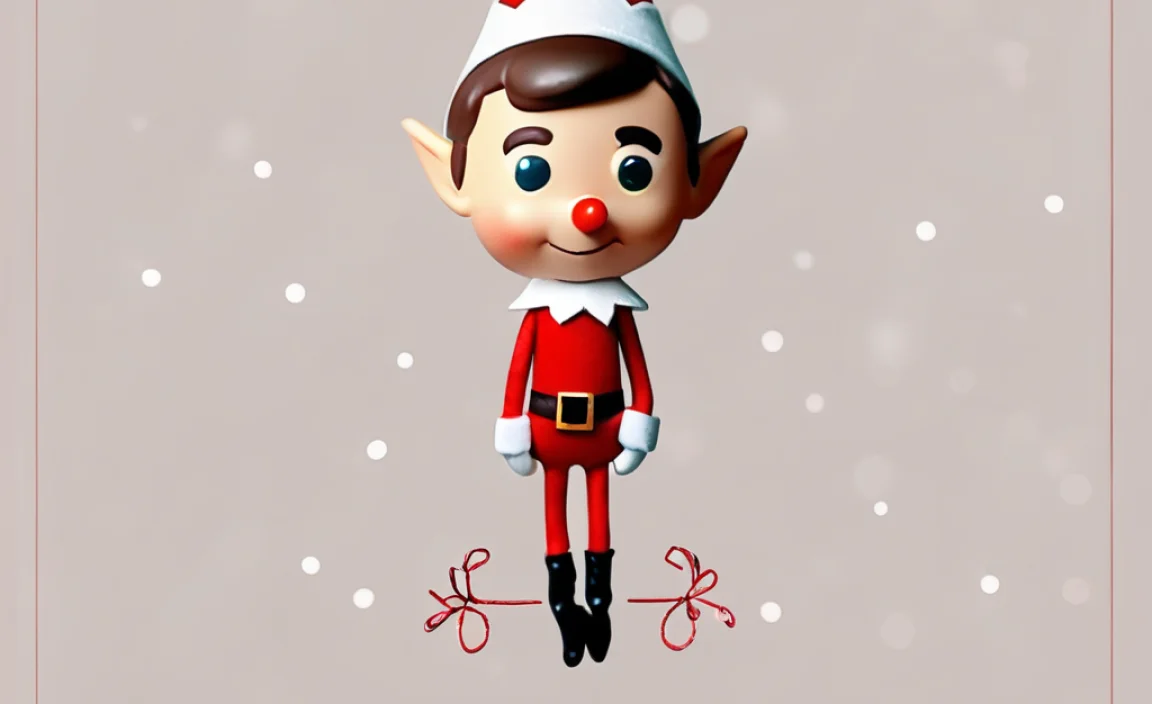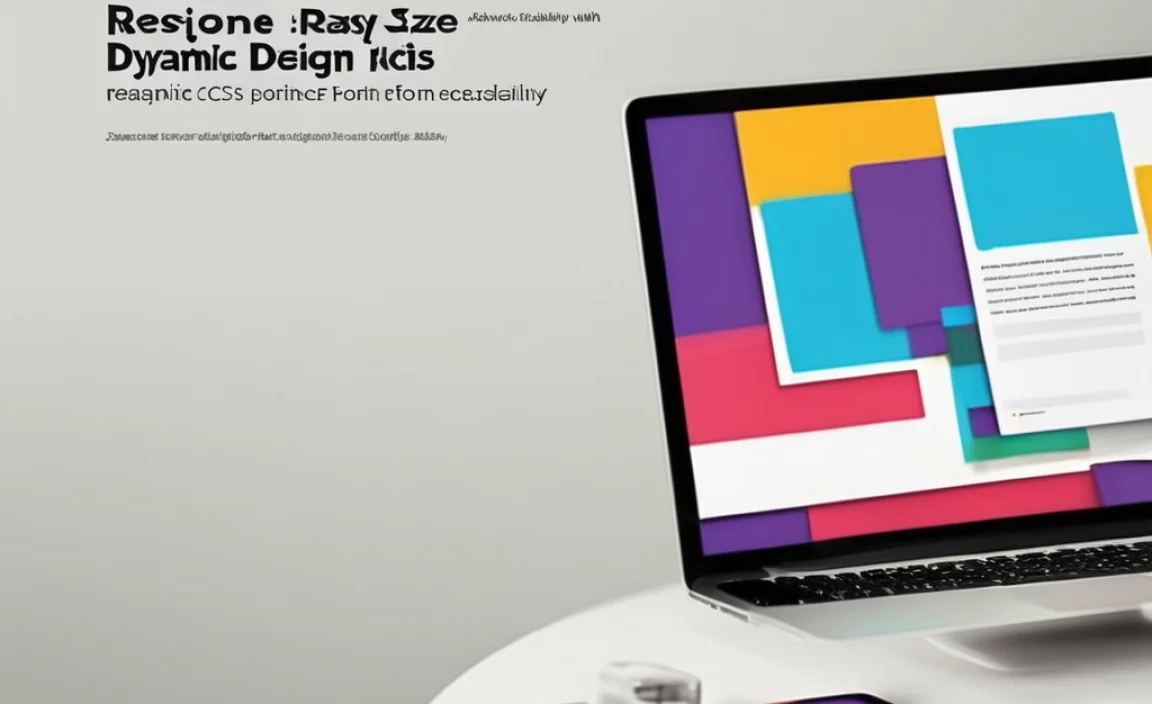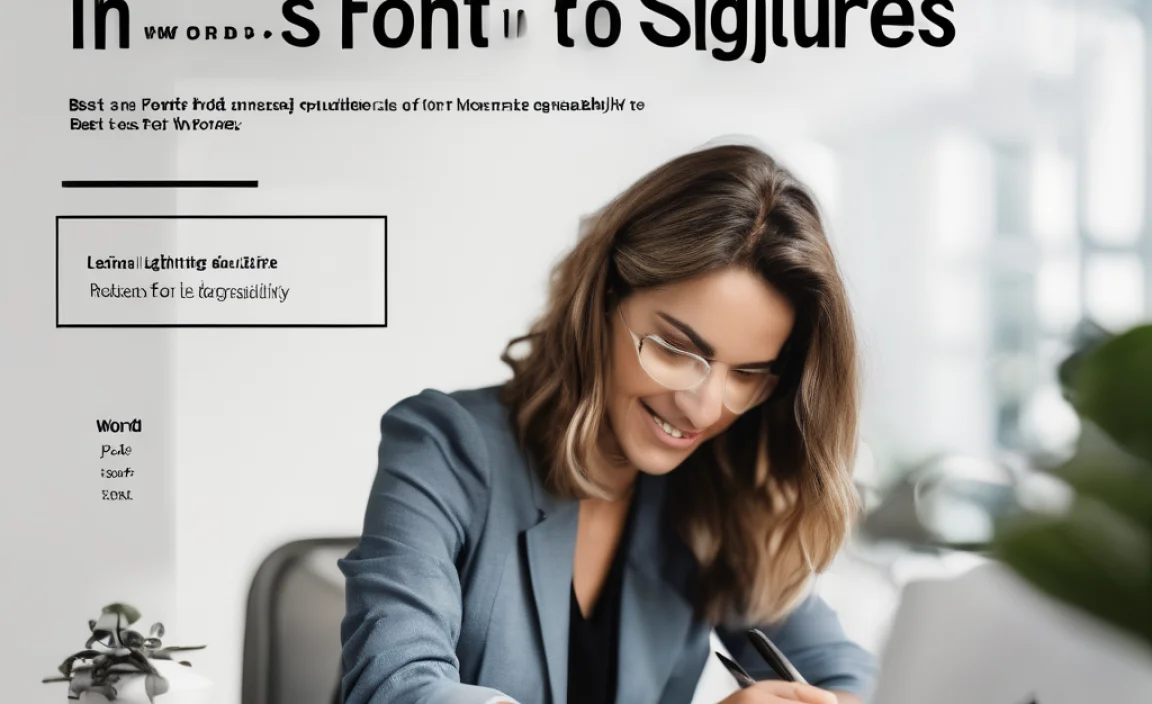The Pininfarina Font is a sophisticated, highly readable typeface that embodies the elegance and precision of the renowned Italian design house, perfect for brands seeking a timeless and premium aesthetic. Explore its genius and essential design principles to elevate your projects.
Ever feel like your brand’s message is getting lost in translation, even with the best words? Sometimes, the magic isn’t just in what you say, but how you say it visually. Typography plays a huge role, and choosing the right font can make all the difference. It’s like picking the perfect outfit for your words – it sets the mood and makes a lasting impression. If you’re looking to add a touch of class and clarity, you’ve landed in the right place. We’re diving into the world of the Pininfarina Font, a true gem in the design universe. Get ready to discover how this font can transform your projects and make your message sing.
Unveiling the Genius of the Pininfarina Font: More Than Just Letters
When we talk about “Pininfarina Font,” we’re not referring to a single, universally recognized typeface in the same way we might talk about Helvetica or Times New Roman. Instead, the term often evokes the stylistic essence and visual language associated with the iconic Italian design firm, Pininfarina S.p.A. This firm is world-renowned for its breathtaking automotive designs – think Ferrari, Maserati, and Alfa Romeo – characterized by flowing lines, aerodynamic grace, and an unparalleled sense of luxury and performance. The “Pininfarina Font” therefore represents a design philosophy translated into typographic form: one of sophisticated simplicity, dynamic elegance, and enduring quality.
The genius of this approach lies in its ability to imbue a typeface with the same attributes that make Pininfarina’s car designs so captivating. It’s about creating a visual identity that feels both cutting-edge and classic, powerful yet refined. For designers and brands, understanding this essence allows for the selection or even inspired creation of fonts that carry this distinguished pedigree. It’s a subtle nod to an era of design mastery, offering a visual narrative of innovation, beauty, and excellence.
The Core Elements of Pininfarina-Inspired Typography
While there isn’t one single “official” Pininfarina font, the style associated with the brand’s visual identity shares several key characteristics. These elements, when found in a typeface, can evoke that signature Pininfarina feel:
- Elegant Curves and Flow: Much like their car designs, Pininfarina-inspired fonts often feature smooth, sweeping curves. These aren’t just ornamental; they contribute to an overall sense of motion and fluidity, making the text engaging and visually pleasing.
- Clean Lines and Precision: Despite the curves, there’s always an underlying structure and precise execution. This translates to sharp terminals, balanced letterforms, and consistent spacing, ensuring optimal readability and a professional finish.
- Balanced Proportions: The characters are carefully proportioned, striking a harmonious balance between width, height, and weight. This prevents any single letter from overpowering another, contributing to a sense of visual equilibrium.
- Subtle Sophistication: The overall impression is one of understated luxury. The design avoids excessive ornamentation or ostentatious flourishes, preferring a dignified and timeless aesthetic. Think of it as a perfectly tailored suit – impeccably crafted and effortlessly stylish.
- Readability is Paramount: Even with its artistic flair, a crucial element is legibility. Whether used for headlines or body text, these fonts must be easy to read, ensuring the message is conveyed effectively and without strain. This is a hallmark of truly great design.
Why is “Pininfarina Font” a Concept Worth Exploring?
The frustration for many designers, especially those new to the field or looking to refine their brand’s visual identity, is finding fonts that convey a specific feeling or message. You might want your brand to feel luxurious, innovative, or timeless, but settling for generic fonts can undermine this aspiration. The “Pininfarina Font” concept, in its broader sense, offers a powerful shortcut. It’s a shorthand for a set of desirable design qualities that are difficult to articulate but instantly recognizable when embodied in a typeface.
By understanding the principles associated with Pininfarina’s design legacy, you can:
- Elevate Brand Perception: Using fonts that embody this sophisticated aesthetic can significantly enhance how customers perceive your brand, suggesting quality, advanced engineering, and refined taste.
- Create Timeless Designs: The Pininfarina style is inherently classic rather than trendy. Fonts that align with this philosophy tend to age gracefully, ensuring your designs remain relevant for years to come.
- Improve Readability with Style: You don’t have to sacrifice legibility for elegance. The genius of this design approach ensures that form and function coexist harmoniously, making your content both beautiful and accessible.
- Find Inspiration for Custom Typefaces: If you’re working with a brand that demands a truly unique identity, understanding these core Pininfarina design tenets can serve as a foundation for commissioning or creating custom typography.
In the following sections, we’ll explore fonts that capture this spirit and provide practical tips on how you can integrate these principles into your own design work, making your projects truly essential and undeniably brilliant.
Finding Fonts That Capture the Pininfarina Spirit
Since there isn’t a single “Pininfarina Font,” the key is to identify typefaces that embody the design philosophy we’ve discussed: elegant curves, clean lines, balanced proportions, and sophisticated simplicity. These fonts often fall into the categories of modern serifs, sophisticated sans-serifs, or even carefully crafted display fonts.
Modern Sans-Serifs: Sleek and Dynamic
Modern sans-serifs are a natural fit for the Pininfarina aesthetic due to their clean lines and often aerodynamic feel. They convey efficiency, innovation, and a forward-thinking attitude. When looking for Pininfarina-esque sans-serifs, pay attention to subtle geometric influences, open counters, and a balanced x-height.
Here are some excellent examples:
- Proxima Nova: This is a highly popular geometric sans-serif known for its readability and modern, clean appearance. It strikes a perfect balance between geometric and humanistic qualities, making it incredibly versatile. Its clean lines and consistent stroke weight evoke a sense of precision. You can explore its features and licensing on Fontspring.
- Avenir Next: Inspired by Paul Renner’s Futura, Avenir Next offers a more refined and lyrical take on geometric sans-serifs. Its name, meaning “future” in French, perfectly aligns with innovation. The subtle rounding of corners and its elegant proportions lend it a sophisticated, almost automotive-inspired grace.
- Gotham: Designed with a decidedly geometric construction, Gotham possesses a strong, confident presence. Its clean, rational forms and excellent readability make it suitable for branding that aims for clarity and impact, akin to the bold yet elegant statements Pininfarina often makes.
- Montserrat: This font, inspired by old posters and signs in the traditional Montserrat neighborhood of Buenos Aires, offers a contemporary geometric style with a friendly yet sophisticated feel. Its balanced letterforms and versatility make it a go-to for many modern designers.
Elegant Serifs: Timeless Sophistication
While Pininfarina is known for modern design, the essence of timeless elegance can also be found in well-chosen serif fonts. These fonts, particularly modern serifs with sharp, clean serifs and balanced strokes, can communicate luxury, heritage, and prestige. They are perfect for creating a sense of established quality and refined taste.
Consider these serif options:
- Playfair Display: This is a transitional serif font that features dramatic contrast between thick and thin strokes and elegant, sharp serifs. It has a sophisticated, old-world charm but with a contemporary crispness, making it excellent for headlines and branding that needs to exude high-end appeal.
- Lora: A well-balanced contemporary serif with roots in calligraphy, Lora offers a smooth, flowing feel. It’s particularly good for body text, providing excellent readability while maintaining an artistic and graceful presence.
- Merriweather: Designed to be a very legible serif font on screens, Merriweather has a generous x-height and sturdy structure. Its classic proportions and subtle serifs lend it an air of reliable elegance, perfect for conveying foundational quality.
Display Fonts: Making a Statement
For special applications, like logos or key branding elements, a carefully selected display font can truly capture the dynamic and artistic spirit of Pininfarina. These fonts are designed to grab attention and make a strong visual statement.
Look for display fonts that have:
- Unique Swashes or Ligatures: These can mimic the flowing lines of car designs.
- Geometric or Sculptural Forms: Fonts that feel engineered and have distinct shapes can be very effective.
- Bold, Expressive Strokes: These add a sense of power and dynamism.
Examples might include custom-lettered logotypes or highly stylized fonts that prioritize aesthetic impact while still maintaining a sense of underlying design integrity and proportion.
Designing with Typographic Precision: Applying the Pininfarina Principles
Choosing the right font is only half the battle. Effectively applying typographic principles to emulate the “Pininfarina Font” essence requires attention to detail and an understanding of how letterforms work together. It’s about precision, balance, and creating a harmonious visual experience.
1. Hierarchy and Readability: The Foundation of Design
Even the most elegant font can fail if the hierarchy of information is unclear or if text is difficult to read. This is where the Pininfarina principle of form following function, combined with clarity, becomes essential.
- Establish Clear Hierarchy: Use different font weights, sizes, and styles (e.g., bold for headlines, regular for body text) to guide the reader’s eye. The most important information should be the most prominent.
- Optimize Line Length: Aim for line lengths that are comfortable for reading. Too long, and the eye struggles to return to the start of the next line. Too short, and the reading rhythm is choppy.
- Mind Your Spacing (Kerning and Leading):
- Kerning: The space between individual letter pairs. For a Pininfarina-inspired look, meticulous kerning is crucial to ensure smooth transitions between letters, especially in headlines.
- Leading (Line Spacing): The vertical space between lines of text. Adequate leading prevents text from feeling cramped and improves readability. Too much can make text feel disconnected.
- Choose Appropriate Weights: A font family with multiple weights (light, regular, medium, bold, black) offers versatility. Use these variations strategically to emphasize points and create visual texture.
2. Pairing Fonts Like a Master Designer
Successful design often involves combining different typefaces. For a Pininfarina-inspired pairing, aim for contrast and harmony. A common and effective strategy is to pair a serif with a sans-serif.
Pairing Strategies for a Sophisticated Look:
Here’s a table illustrating effective pairing strategies:
| Primary Font (Headline/Display) | Secondary Font (Body Text) | Rationale |
|---|---|---|
| Elegant Serif (e.g., Playfair Display) | Clean Sans-Serif (e.g., Proxima Nova) | Classic elegance meets modern clarity. The serif adds a touch of luxury, while the sans-serif ensures excellent readability for longer passages. |
| Sophisticated Sans-Serif (e.g., Avenir Next) | Slightly different Sans-Serif or a minimalist Serif (e.g., Lora) | Modern, dynamic, and precise. Pairing two sans-serifs can work if they have distinct personalities (one geometric, one more humanist). Adding a subtle serif can provide a grounded, approachable feel. |
| Bold Display Font (for logos/accents) | Highly readable Sans-Serif (e.g., Montserrat) | Statement piece complemented by functional support. The display font makes a strong first impression, while the sans-serif ensures all supporting information is easily consumed. |
The goal is to create a visual conversation between the fonts, where one complements the other without competing. Think about the overall mood you want to convey – is it more about dynamic innovation or timeless luxury?
3. Color and Contrast in Typography
The choice of color for your text significantly impacts its readability and the overall aesthetic. For a Pininfarina-inspired palette, think sophisticated and deliberate.
- Maintain High Contrast for Readability: Dark text on a light background (or vice-versa) is essential for clarity. Black or very dark grey on white or off-white is a classic, highly readable combination.
- Use Accent Colors Sparingly: If you use color for emphasis, choose sophisticated hues. Deep blues, rich burgundies, metallic tones (gold, silver, bronze when represented digitally), or muted earth tones often work well.
- Consider Monochromatic Schemes: Using different shades and tints of a single color can create a very refined and cohesive look, reminiscent of high-end printing.
4. Whitespace: The Unsung Hero of Elegant Design
Just as the empty space around a sculpture can define its form, whitespace (or negative space) in design frames your typography and enhances its impact. Pininfarina’s designs are never cluttered; they breathe.
- Ample Margins: Don’t be afraid of generous margins around your content. This gives the typography room to stand out and reduces visual clutter.
- Strategic Spacing Between Elements: Ensure there’s enough space between paragraphs, images, and other design elements. This guides the reader and creates a sense of order and calm.
- Generous Letter Spacing (Tracking): For headlines or display text, slightly increasing the overall letter spacing (tracking) can give a more airy, elegant, and refined feel.
By meticulously applying these design practices, you can elevate any typeface to embody the sophisticated precision synonymous with the Pininfarina name, even if you’re not using a font directly tied to the brand.
Case Study: Applying the Pininfarina Design Ethos
Let’s imagine a scenario: A new luxury electric vehicle startup wants to establish a brand identity that speaks of innovation, exclusivity, and exquisite craftsmanship. They need a website, marketing materials, and a logo. How would they approach their typography using the Pininfarina ethos?
The Brand Persona
- Keywords: Innovation, Elegance, Precision, Future, Luxury, Performance, Craftsmanship.
- Target Audience: Affluent, tech-savvy individuals who appreciate fine design and cutting-edge technology.
- Desired Impression: A brand that is both a technological marvel and a work of art.
Typographic Choices and Application:
1. Logo and Primary Branding:
For the company logo, they might commission a custom typeface or select a unique display font that encapsulates dynamism and sophistication. Imagine a logotype with sharp, extended ascenders and descenders that subtly mimic aerodynamic lines, or perhaps a geometric sans-serif with meticulously engineered letterforms. Alternatively, a modern serif with distinct, sharp serifs and a refined structure could convey heritage and luxury.
Typeface Example: A custom-designed logotype or a sophisticated geometric sans-serif like Brandon Grotesque with custom kerning, or a modern serif like Cormorant Garamond for a more classic luxury feel.
2. Website Headlines and Key Statements:
Headlines should be bold, clear, and impactful, drawing inspiration from the flowing lines and strong presence of Pininfarina’s automotive designs. A strong, clean sans-serif works well here, perhaps in a heavier weight.
Typeface Example: Avenir Next Bold or Proxima Nova Semibold. The balanced proportions and clean shapes communicate modernity and precision.
3. Body Text and Product Descriptions:
Readability is paramount for detailed information about vehicle specifications, brand story, and technology. The font here needs to be impeccably legible, comfortable for extended reading, and still maintain an air of sophistication.
Typeface Example: Lora Regular or Merriweather Regular. These serifs offer a blend of readability and elegance, providing a softer contrast to potential sans-serif headlines and conveying a sense of quality and trustworthiness.
4. Call-to-Actions (CTAs) and UI Elements:
Buttons and navigation elements need to be clear and actionable. A highly readable and slightly more geometric sans-serif is often ideal for functionality.
Typeface Example: Montserrat Medium or Gotham Medium. Their structured forms and clear legibility ensure users can easily interact with the interface.
5. Application of Design Principles:
- Whitespace: The website would feature ample whitespace, allowing the typography and imagery to ‘breathe’ and emphasizing the premium nature of the brand.
- Hierarchy: A clear visual hierarchy would guide users, with headlines being prominent, subheadings supportive, and body text easily scannable.







